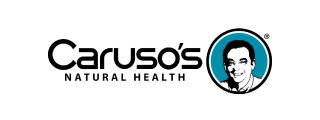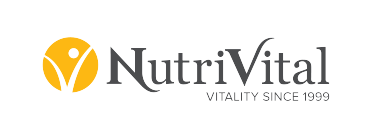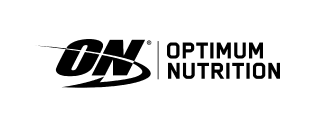
- Health advice
- Jan 05, 2015
Food provides the major source of raw materials for your nutrition, and today, we have access to an abundant amount of food, every day, all year round, regardless of season or geographical origin.
Even with this unprecedented amount of food available, we have managed to become overfed and undernourished. The majority of our food sources are continually being tampered with; from the way our foods are grown, how they’re transported and stored, to how our food is processed and packaged.
 Herbs of Gold Products
Herbs of Gold Products
Recommended Dietary Intake (RDI) in Australia
The RDI in Australia is calculated on the average daily dietary intake that’s considered ‘sufficient’ to meet the nutrient requirements of nearly all healthy individuals. The RDI does not reflect the amount of nutrients that you as an individual may need on a daily basis for optimal health. Taking into consideration the state of our food, plus the lifestyle choices, dietary plans and physical activity we choose, existing health conditions, and variations within age groups and genders, nutritional requirements will vary for each individual.Micronutrients have a big impact
Macronutrients, in the form of proteins, carbohydrates and fats provide major nutritional components that you need in large quantities, whereas micronutrients, in the form of vitamins and minerals, provide major nutritional components that you need in small quantities. Vitamins and minerals are considered essential nutrients, and by acting together, they perform hundreds of roles in your body. A deficiency of one micronutrient can have as much impact on your health as a macronutrient deficiency, think:- iron and anaemia
- folic acid and spina bifida
- vitamin C and scurvy
- vitamin D and rickets
- calcium and osteoporosis
Specific types of multivitamins:
- Women’s Women’s nutritional requirements can be different to men’s. A women’s multivitamin should provide a good base of vitamins and minerals for general wellbeing while supporting health issues that concern women including hormonal variations, thyroid dysfunction, anti-ageing antioxidant support for healthy skin, strong healthy bones and healthy iron levels.
- Men’s Men’s nutritional requirements are typically higher than that of women’s. A men’s multivitamin should also provide a good base of vitamins and minerals for generalwellbeing while supporting health issues that concern men including prostate health, sexual dysfunction and to enhance normal, healthy male physiology and function for optimal performance in men.
- Children’s Children can be fussy eaters or suffer from various food allergies or intolerances so a children’s multivitamin provides broad spectrum nutrients that may be missing in the diet. Consequences of poor nutrition include failure to thrive, intellectual difficulties and childhood obesity.
- Prenatal, Pregnancy & Breastfeeding Nutritional demands are greatly increased during pregnancy and breastfeeding for both the mother, and to support the growth and development of the unborn baby/newborn, and should include B vitamins, choline, folic acid, iron, iodine, zinc and vitamin D, amongst others.
- 50+ Multi Specifically designed to meet the requirements of men and women over 50 years of age by supporting cardiovascular, bone, immune and nervous system health, cognitive function, blood sugar management and energy production.
Mr Vitamins recommends
 Herbs of Gold Products
Herbs of Gold Products
- Women’s Multi
- Men’s Multi
- Children’s Multi Care
- Pregnancy Plus 1-2-3
- Active 50+ Multi
References
- Bridgman, K Dr (2000), We are what we eat, Carbohydrates.
- Caudill, RD, 2010, ‘Pre- and Postnatal Health: Evidence of Increased Choline Needs,’ J Am Diet Assoc, vol.110, pp.1198-1206.
- Chandrasekhar K, Kapoor J & Anishetty S 2012, ‘A prospective, randomized double-blind, placebo-controlled study of safety and efficacy of a high-concentration full-spectrum extract of ashwagandha root in reducing stress and anxiety in adults’, Indian J Psychol Med. Jul;34(3):255-6.
- Delange, F, 2004, ‘Optimal Iodine Nutrition during Pregnancy, Lactation and the Neonatal Period,’ Int J Endocrinol Metab, vol.2, pp.1-12.
- Eastman, Prof C, 2005, ‘Iodine Supplementation, The benefits for pregnant and lactating women in Australia and New Zealand, Thyroid News, The Australian Thyroid Foundation Ltd , vol. 21.
- Haskell, CF, Scholey, AB, Jackson, PA, Elliott, JM, Defeyter, MA, Greer, J, Robertson, BC, Buchanan, T, Tiplady, B & Kennedy, HO, 2008, ‘Cognitive and mood effects in healthy children during 12 weeks supplementation with multi-vitamin/minerals’, Br J Nutr, vol. 100, no: 5, pp. 1086-1096.
- Hininger, I, Favier, M, Arnaud, J, Faure, H, Thoulon, JM , Hariveau, E, Favier, A & Roussel, AM, 2004, ‘Effects of a combined micronutrient supplementation on maternal biological status and newborn anthropometrics measurements: a randomized double-blind, placebo-controlled trial in apparently healthy pregnant women,’ European Journal of Clinical Nutrition, vol. 58, pp. 52–59.
- Ray, JG, Wyatt, PR, Thompson, MD, Vermeulen, MJ, Meier, C, Wong, PY, Farrell, SA & Cole, DEC, 2007, ‘Vitamin B12 and the Risk of Neural Tube Defects in a Folic-Acid-Fortified Population,’ Epidemiology, vol.18, issue 3, pp. 362-366.
- Vitamins and Minerals, viewed on 16/12/2014 at http://www.helpguide.org/harvard/vitamins-and-minerals.htm.
- Wang, Y, Yin, S, Zhao, X, Lai, J, Ying, H Xu, Q & Jia, J, 2003, ‘Study on the effect of micronutrients supplementation on health status of children’, Wei Sheng Yan Jiu, vol. 32, no: 5, pp.455-458.
- What are nutrient reference values, viewed on 16/12/2014 at https://www.nrv.gov.au/home/introduction.
- Wilt T, Ischani A, Macdonald R, Stark G, Mulrow C & Lau J (2011), ‘Beta-sitosterols for benign prostatic hyperplasia’, Cochrane Database of Systematic Reviews .
Related Articles
Recently Viewed
- ${ variant.price | currencyFromCents } | ${ variant.title } ${ variant.price | currency } | ${ variant.title }
Sale


















